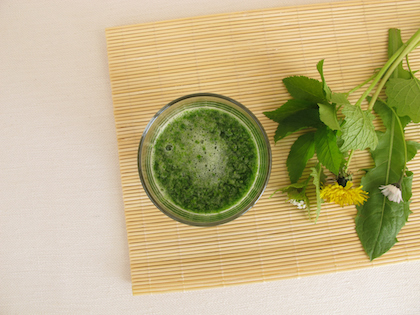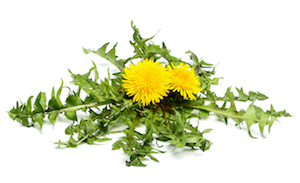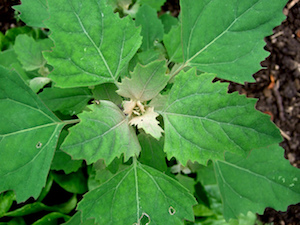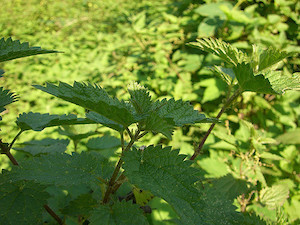
Go Wild: Make Your Own Backyard Juice
By Suzanne Boothby
Looking to save a few dollars on your next green juice or smoothie? Look no further than your own backyard. You may have several types of greens growing in your yard that you thought were weeds, but in fact, they are wild edible plants full of nutrients. These foods are gaining in popularity, thanks to their amazing health benefits.
Going out to gather your own food, also known as foraging, is a great way for you and your family to enjoy a wider array of seasonal foods, and best of all these foods are straight from Mother Nature.
You might be wondering if picking greens in your yard or in a nearby forest is safe. You certainly need to know what you are looking for and avoid any areas near busy roads or that have been sprayed with harsh pesticides. Just like regular veggies, you’ll want to give your wild foods a rinse before they go into your juicer or blender.
If you want to learn more, consider joining a local foraging club, taking a class or finding a good book such as Identifying and Harvesting Edible and Medicinal Plants in Wild (and Not So Wild) Places by Steve Brill. You can also look for some of these plants at your local farmers’ market, as more farmers are now bringing them to the market.
Here are a few common wild plants you might meet in your backyard.
Dandelion Greens
Often disliked by gardeners, this prolific plant has long, pointy green leaves and is easily found in yards and gardens throughout the world. Dandelion greens are nutrient dense and high in vitamins A, K and calcium. Thankfully, this plant has no poisonous look-alikes, so it’s a very safe choice for beginners. You can put it to good use in a juice, like this Dandy Dandelion recipe.
When to Harvest: For the best tasting dandelion, collect the leaves in early spring before the flowers appear. You can also pick them again in late fall.
Taste: Bitter (mix it with apple or cucumber in a juice)
Lamb’s Quarters
This mild green looks a lot like a baby spinach leaf, which makes sense as it’s a relative to both spinach and beets. The leaf resembles a diamond shaped with a light green color. Lamb’s quarters is a another nutritional powerhouse loaded with calcium, potassium, magnesium and vitamins A and C. It thrives in gardens and near rivers, and fields throughout Canada, Australia, New Zealand, India and the U.S. Try it as a replacement for spinach in this Low Sugar Green Juice.
When to Harvest: Early spring into summer
Taste: Mild
Photo credit: Wendell Smith
Stinging Nettles
Now, this plant you will know right away especially if you try to pick it with your bare hands—not recommended. Nettles are known for their sting so you want to wear gloves when handling them. But don’t worry, you can easily remove the sting by either soaking them in water overnight or giving them a quick boil on the stove (for at least 5 minutes). Nettles are a great source of calcium, potassium and vitamins A and K. They may not produce a lot of juice, but they would be a great addition to a smoothie, like in this Green Berry Bliss Smoothie. Simply replace a handful of spinach with a handful of soaked or boiled nettles.
When to Harvest: Early spring and late fall
Taste: Mild (remember to be careful of the sting)
Photo credit: Tom Fogg


